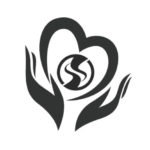After being in space for nearly half a year, NASA astronauts Suni Williams, Butch Wilmore, Roscosmos cosmonaut Aleksandr Gorbunov, and Nick Hague successfully landed off the coast of Tallahassee, Florida, just minutes after departing from the ISS (International Space Station). They were part of the Crew-9 mission, which was the fourth flight of the NASA Dragon spacecraft named Freedom. In this article, we will go over the purpose of their mission, what they accomplished in space, and the future of space missions for NASA.
The Crew-9 mission, launched on September 28, 2024, had a primary objective of conducting scientific research and testing new technologies to aid future space exploration. Over their six month stay at the ISS, the crew completed over 900 hours of research in various fields, including human adaptation to microgravity, the development of new medical treatments in space, and advancements in autonomous spacecraft systems. These experiments are crucial for NASA and SpaceX’s long-term plans for missions to the Moon, Mars, and beyond.
However, their return to Earth on March 18th, 2025 was met with challenges. A helium leak was detected in the Dragon spacecraft’s propulsion system, raising concerns about potential thruster malfunctions. NASA and SpaceX engineers carefully evaluated the issue and determined that it would not pose a significant threat to the crew’s safety. After additional checks, the spacecraft was cleared for reentry into the Earth’s atmosphere as they successfully splashed down in the Atlantic Ocean off the coast of Florida.
Looking ahead, NASA remains committed to space exploration, with upcoming Artemis missions aimed at establishing a sustainable presence on the Moon before venturing to Mars. Partnerships with private space companies like SpaceX, founded by Elon Musk in 2002, continue to drive innovation, making space travel more cost effective and accessible. The success of Crew-9 provides critical data that will shape the future of humanity in space and exploration beyond Earth’s orbit and even our solar system
